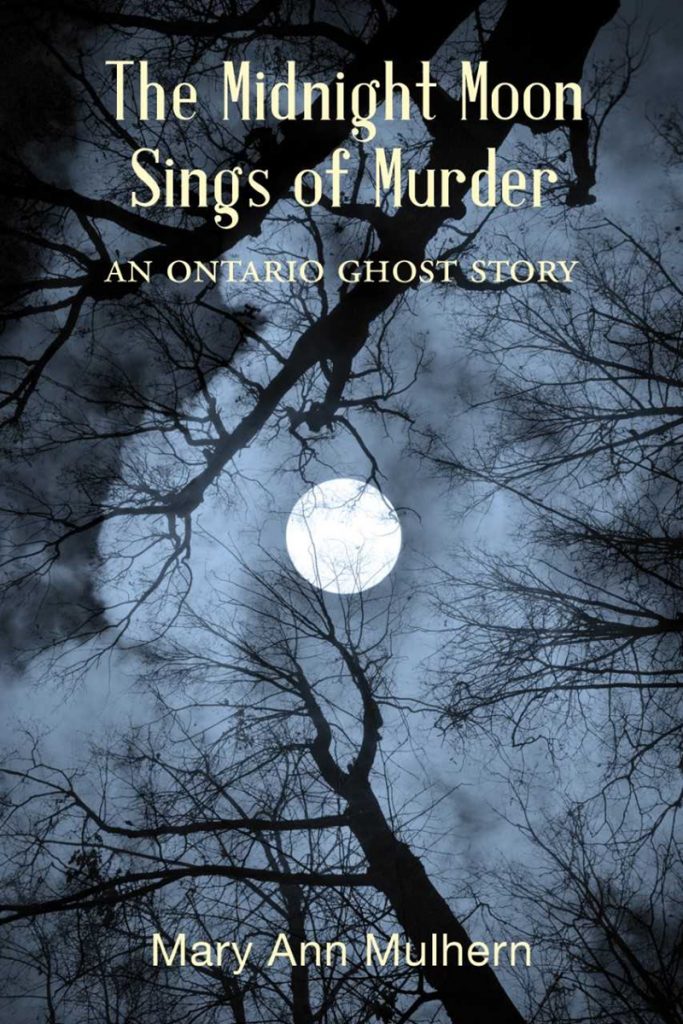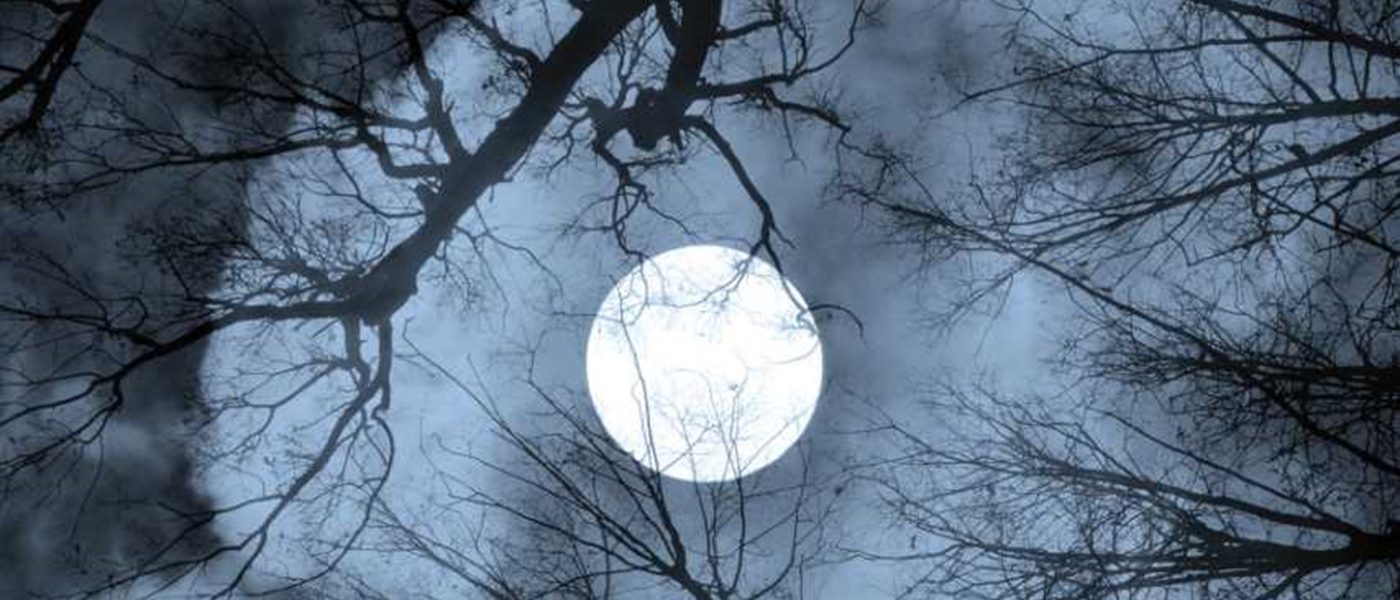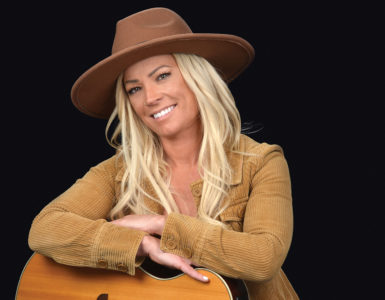New Poetry Collection,
The Midnight Moon Sings of Murder,
by Poet Laureate Mary Ann Mulhern
Story by Michael Seguin
The Donnelly Massacre took place at midnight, on January 4th, 1880, when the local vigilance committee stormed the family’s log cabin. Five members of the Donnelly family were murdered in their beds.
Later, William Donnelly, the eldest surviving son, erected a black marble tombstone, sharing the morbid tale.
This action spoke to Mary Ann Mulhern, who learned earlier than most that tombstones whisper stories.
“My father was the caretaker of Holy Angels Cemetery, in St. Thomas,” Mary explains. “For my brothers and I, our playground was the cemetery. We lived at the cemetery house. People often came to the house to talk to my father. There were no survivor programs at the time, no programs to help people cope. My father was a very intelligent, very compassionate man. Even though I was too young to really understand, in later years I realized that he was, in fact, helping them with their grief. Maybe this was an unusual background for some people. But I think it’s great for a writer!”

To call Mary’s life interesting is an understatement. After obtaining her Bachelor of Arts and Masters of Education degrees from the University of Windsor, Mary entered the convent—which she describes as a “mysterious, silent place.” There, Mary endured the loneliest period of her life.
When Mary left the convent eight years later, she had no savings, no friends, was almost 30 and stranded in an unfamiliar city: Windsor.
Instead of despairing, Mary carved out a life for herself. She continued to teach, living in a boarding house for two years before scraping enough funds together to rent an apartment. She borrowed money from friends to purchase a car.
And before long, she was calling Windsor home.
“Being sent to Windsor was the best thing that ever happened to me!” Mary explains. “The convent did me a big favour. Windsor is so friendly. I love Windsor! I think it’s a great city. There’s wonderful people here. It’s really made something of itself.”
Mary taught with the Windsor Separate School Board for over 30 years. However, she was not retired long before discovering another calling.
“The summer I retired from teaching, I saw a course being advertised for beginning writers at the University of Windsor,” Mary recalls. “So I took it. It was taught by John B. Lee, the Poet Laureate of Brantford. He’s a well-known Canadian poet. He told me my work had potential.”
Thanks to her mentor’s encouragement, Mary entered the Freedom Festival Poetry Contest in 2001, where her poem “Freedom’s Rail” won first prize. This brought her to the attention of Marty Gervais, the publisher of Black Moss Press.
“The first time Marty met me, he said, ‘Tell me about yourself,’” Mary states. “So I told him about living in a cemetery and entering a convent. He told me later that he didn’t believe a word I said. It was too unbelievable! But, when I started bringing him some poems about the convent, he said, ‘Oh my God. This is going to be a book.’”
Mary’s first collection of poetry, The Red Dress, was published in 2003. Since then, Mary has published eight books with Black Moss Press, including Touch the Dead, which was shortlisted for the Acorn-Plantos Award in 2007, and When Angels Weep, which details the sexual abuses of Chatham’s Father Charles Sylvester.
After almost 20 years of writing, Mary was named Windsor’s Poet Laureate in 2019.
The Midnight Moon Sings of Murder is Mary’s latest collection of poems published by Black Moss Press. The volume chronicles the infamous Donnelly Massacre, where a family of Irish settlers in Lucan were murdered by their neighbours.

“Through talking to people, I started to realize that these people were murdered, and that there’s never been any justice,” Mary states. “There was an eyewitness: Johnny O’Connor, who hid under a bed. He recognized all the voices in the house. He heard what was going on. Johnny testified brilliantly at the trial. But somebody spread a rumour that he was the bootlegger’s son, so nobody believed what he said. All the murderers were acquitted. There was never any justice.”
For Mary, part of her intent with writing this book was an effort to set the record straight.
“There was a so-called writer named Thomas P. Kelley in the ‘50s,” Mary explains. “He was used to writing sensationalist material. He wrote two books—The Black Donnellys and The Revenge of the Black Donnellys—which are totally without fact. Another writer, James Reaney, said that Kelley murdered the Donnellys all over again.”
The primary character of the poetry collection is Bridget Donnelly, the true ghost of the massacre.
“Johanna and James Donnelly, the parents, were aging,” Mary explains. “Johanna was no longer able to keep up with the housework. So they sent to Ireland for their young niece, Bridget. They paid her passage. She was probably either 18 or 19. She came a year before the murders. She’s been written out of every account. And so, by making her the central character of my book, I’m finally giving her a voice.”
Through Bridget, Mary explores the entire tragedy, chronicling the prelude, the grisly climax and the terrible injustice of the aftermath.
“William Donnelly, the eldest son, found the murders almost unbearable,” Mary states. “So, he purchased a tall black tombstone and wrote the story on it. James Donnelly, murdered. Johanna Donnelly, murdered. He went all the way down. But, people started coming at night and chiseling off parts of the monument, as a keepsake. They had to take the monument out of cemetery. The tombstone that’s there now is white. It doesn’t say anything about the murders.”
The Donnelly Massacre is a story that continues to haunt Southwestern Ontario. One of Mary’s closest friends moved to Lucan when she was 13—over 60 years after the murders. Even then, her friend reports continuing to feel “ripplings” of the anger. Even then, the priest at St. Patrick’s Parish continued to defend the actions of the murderers.
“John B. Lee told me once that this was Canada’s great Gothic story,” Mary states. “I think so, too. Because there’s no resolution. It’s a story that continues.”
As the child of Irish immigrants, the Donnelly Massacre has a deep personal connection to Mary.
However, the subject matter is not entirely morbid. By writing this literary account of one of Southwestern Ontario’s greatest ghost stories, Mary—like her father before her, like the majority of her work—is consoling all those affected by the tragedy.
“My father consoled people,” Mary states. “Maybe I inherited that empathy. For a wrong that has never been righted. One of the courthouse poems says: ‘Everyone’s loss, forever, and forever and forever…’ The justice isn’t there. So maybe I’m trying to offer some consolation, and some credibility to the family. Some compassion.”
Black Moss Press celebrated a pre-launch luncheon for The Midnight Moon Sings of Murder at the Windsor Yacht Club on January 25th.
An official launch is set to follow in April.







Add comment